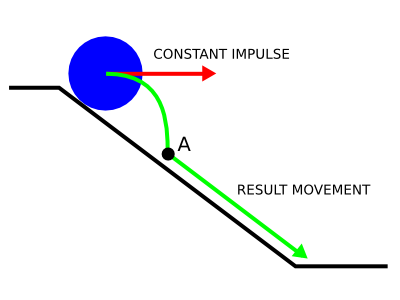Hello,
I’m trying to understand why the physics simulation reacts in a certain way.
I’ve made this diagram trying to illustrate it:

When I apply a permanent constant forward impulse to a rigid body on the top of a slope, it “jumps” forward until it fall on the slope (point A) and then continues down.
Does anyone know why there are no other jumps after point A?
Considering I’m still applying the constant forward impulse.
Best regards.



